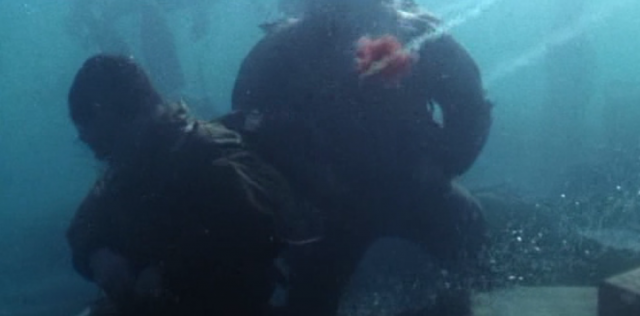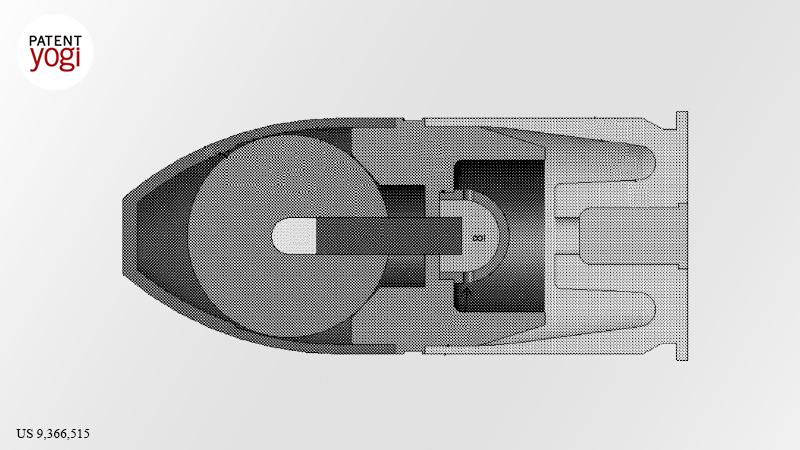Hostile underwater swimmers are a potential threat against military and commercial shipping anchored
in civilian, military or dual-use ports and harbors.
Traditional weapons are not very effective against such attacks. For instance, small arms fire will not penetrate more than two to four feet of water with any lethal force. In addition, the vessel or ship may be in water of insufficient depth to use standard depth charges. Heavy platform mounted weapons are not be capable of being directed to suppressed elevations. Also, hand thrown grenades are not capable of being thrown far enough or accurately enough to counter the attack.
Another conventional solution is to use human swimmers around the naval vessel to protect the vessel from attack. This puts soldiers at risk.
Lockheed Martin has developed and patented an explosive device (a forty millimeter (40 mm) grenade) which is designed to detonate after sinking to a designated depth or after a set amount of time has elapsed through use of a water-activated fuse train. This enables the defenders to lay an extended defense parameter around the vessel. The concussive effects of the grenade going off at depth would disorient, disable, or kill any hostile underwater swimmers without hazard to the vessel or its defenders.
The blast wave from patented device in exploding passes through the human body (of a hostile swimmer) as the human body is of similar consistency to water. Hence, molecules of the human body are displaced very little except in gas spaces capable of compression. Damage is at the gas water interfaces within the body. The gas in the gas filled cavities is instantaneously compressed as the pressure wave passes through the body and the walls of the spaces are torn or shredded as in barotrauma. Damage occurs in the lungs, intestines, sinuses and ear cavities. In the lungs, the damage is not necessarily due to pressure transmitted via the upper airways but as a result of transmission of the wave directly through the thoracic wall.

Damage to the respiratory system includes pulmonary hemorrhages at bases, bronchi and trachea, as well as alveolar and interstitial emphysema, and pneumo-haemothorax damage. Intestinal damage includes subserous and submucosal hemorrhage and perforations. Because of the lack of gas cavities, damage to the kidney, bladder, liver and gallbladder is de minimus or non-existent.
Primary causes of death resulting from an underwater explosion of the patented device would include:
(1) pulmonary damage (e.g., low arterial 0.sub.2 saturation (PaO.sub.2) hypoxaemia, high arterial CO.sub.2 retention (PaCO.sub.2) hypercarbia, and respiratory acidosis);
(2) brain damage (e.g., petechial hemorrhage and oedema caused by a rapid increase in the venous pressure, following compression of the thoracic and abdominal venous reservoirs by the pressure wave, which causes small blood vessels rupture in the cerebral venous system); and
(3) air embolism (e.g., due to the rupture of lung alveoli and the compression of the alveolar gas which enters the pulmonary vein, left ventricle, and cerebro-vascular system causing an air embolism to the brain).
Secondary causes of death could include: pulmonary broncho-pneumonia; brain coma; intestinal perforation and peritonitis, as well as other secondary effects of concussion and shock.
Publication number: US 9,366,515
Patent Title: Explosive device and mini depth charge grenade
Publication date: 14 Jun 2016
Filing date: 5 Apr 2013
Inventors: Toby D. Thomas; Jonathan H. Record; Kenneth W. Havens; David L. Hunn;
Applicant: Lockheed Martin Corporation

